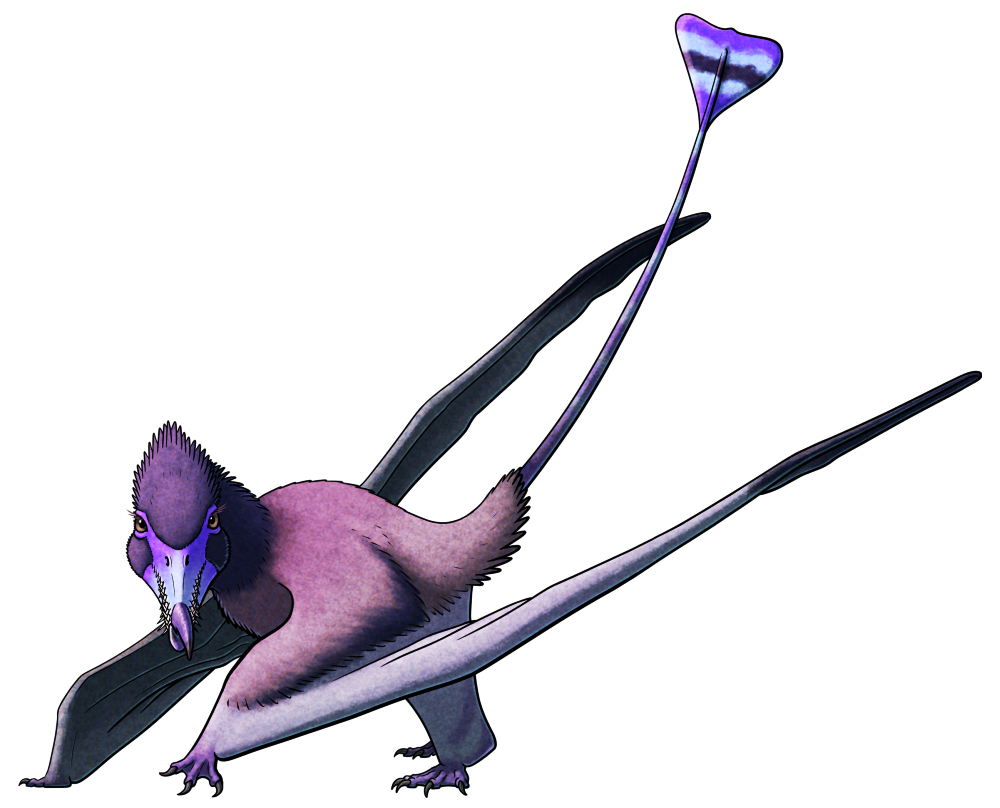Rhamphorhynchus muensteri was one of the first pterosaurs known to science, and its snaggletoothed snout and long vaned tail have become classic features of many fictional “pterodactyls”. But despite its prevalence in pop culture depictions, it actually seems to have been quite a highly specialized pterosaur compared to its closest relatives – and a few specimens also seem to have an unusual little bit of asymmetry going on.
Living during the Late Jurassic, about 150-145 million years ago, around the warm shallow seas of what is now southeast Germany, Rhamphorynchus had a a wingspan of up to at least 1.8m (~6′), with larger fragmentary fossils suggesting a maximum of around 3m (~9’10”).
It had proportionally long wings, splaying intermeshing needle-like teeth, and a toothless beak at the tip of its jaws. The lower beak hooked strongly upwards, while the upper seems to have varied from upwards-curving to straight to downward-curving in different individuals – and some of these arrangements mean the keratinous beak tips must have crossed when the jaws closed, twisting to each side to asymmetrically pass each other similarly to modern crossbill birds.
Several specimens have been found with fish and cephalopod remains preserved in their guts, and along with the pointy intermeshing teeth this indicates Rhamphorhynchus was probably mainly piscivorous, occupying a similar ecological role to modern seabirds.
The different shapes of the toothless jaw tips may suggest there were several distinct populations of this pterosaur species exploiting slightly different food sources to each other, and the crossing beaks may have been an adaptation to pry the soft parts out of hard-shelled prey.

